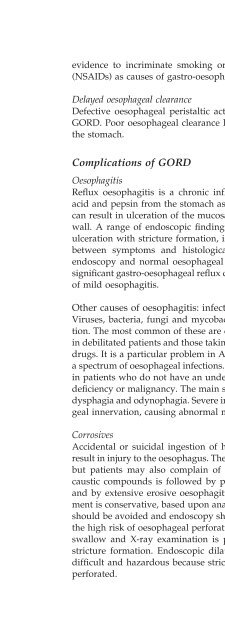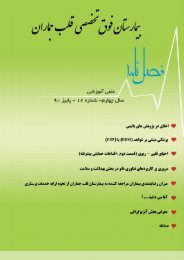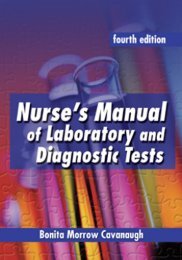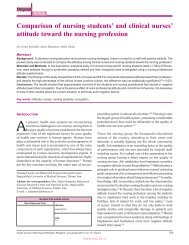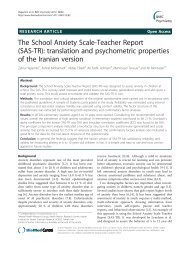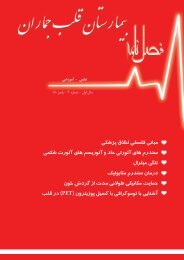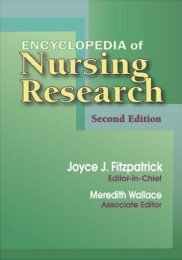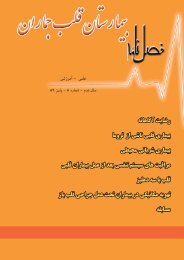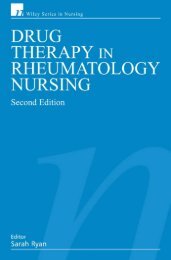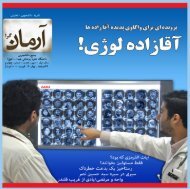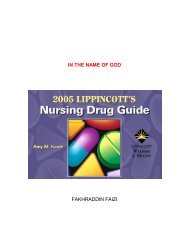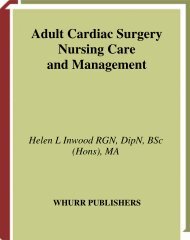Gastrointestinal Nursing.pdf
Gastrointestinal Nursing.pdf
Gastrointestinal Nursing.pdf
Create successful ePaper yourself
Turn your PDF publications into a flip-book with our unique Google optimized e-Paper software.
The Oesophagus 29evidence to incriminate smoking or non-steroidal anti-inflammatory drugs(NSAIDs) as causes of gastro-oesophageal reflux disease.Delayed oesophageal clearanceDefective oesophageal peristaltic activity can be seen in patients who haveGORD. Poor oesophageal clearance leads to increased exposure to acid fromthe stomach.Complications of GORDOesophagitisReflux oesophagitis is a chronic inflammatory process mediated by gastricacid and pepsin from the stomach as well as bile from the duodenum, whichcan result in ulceration of the mucosa and secondary fibrosis in the muscularwall. A range of endoscopic findings, from mild redness to severe bleedingulceration with stricture formation, is recognised. There is a poor correlationbetween symptoms and histological and endoscopic findings. A normalendoscopy and normal oesophageal histology are perfectly compatible withsignificant gastro-oesophageal reflux disease. Plate 2 shows an endoscopic viewof mild oesophagitis.Other causes of oesophagitis: infectious diseasesViruses, bacteria, fungi and mycobacterium can all cause oesophageal infection.The most common of these are candida. Oesophageal candidiasis occursin debilitated patients and those taking broad-spectrum antibiotics or cytotoxicdrugs. It is a particular problem in AIDS patients, who are also susceptible toa spectrum of oesophageal infections. Oesophageal candidiasis rarely developsin patients who do not have an underlying disease such as diabetes, immunedeficiency or malignancy. The main symptoms of oesophageal candidiasis aredysphagia and odynophagia. Severe infection of the gullet can destroy oesophagealinnervation, causing abnormal motility.CorrosivesAccidental or suicidal ingestion of highly alkaline or acidic substances mayresult in injury to the oesophagus. The most common symptom is odynophagia,but patients may also complain of dysphagia and chest pain. Ingestion ofcaustic compounds is followed by painful burns of the mouth and pharynxand by extensive erosive oesophagitis. At the time of presentation, managementis conservative, based upon analgesia and nutritional support. Vomitingshould be avoided and endoscopy should not be done at this stage because ofthe high risk of oesophageal perforation. Following the acute phase, a bariumswallow and X-ray examination is performed to demonstrate the extent ofstricture formation. Endoscopic dilation is usually necessary, although it isdifficult and hazardous because strictures are often long, tortuous and easilyperforated.


